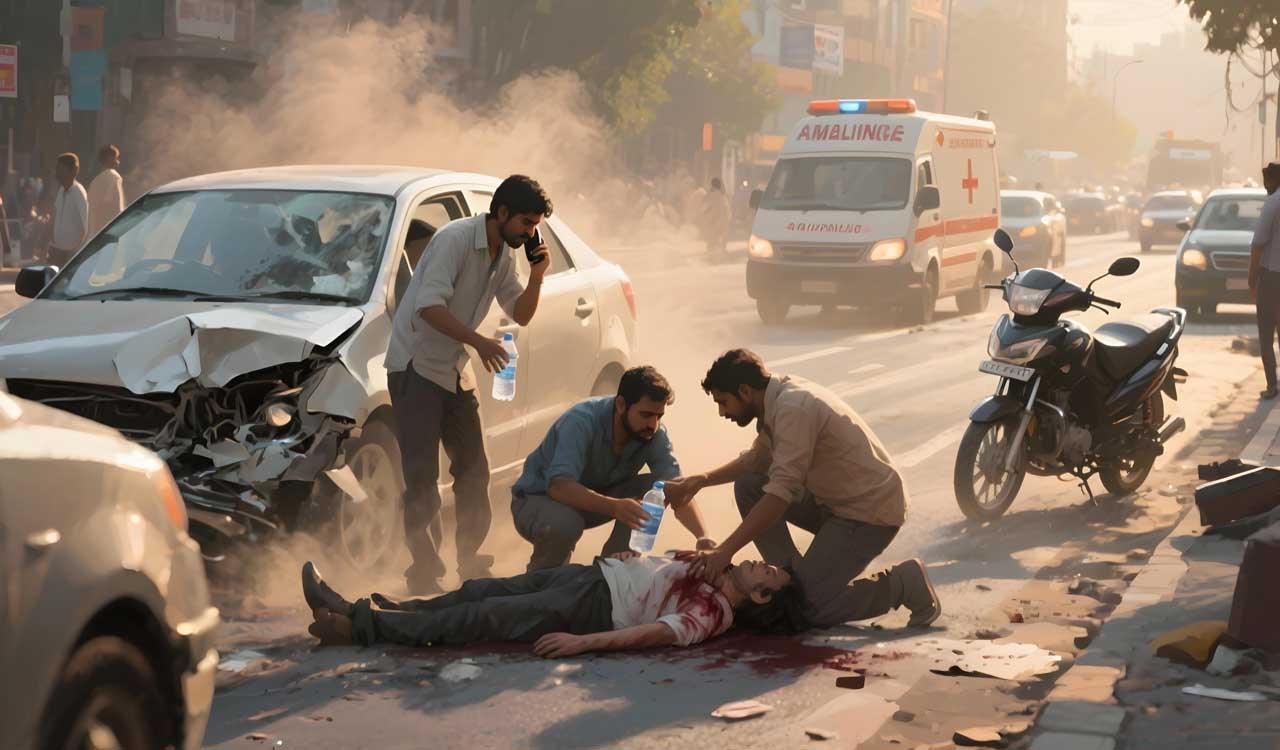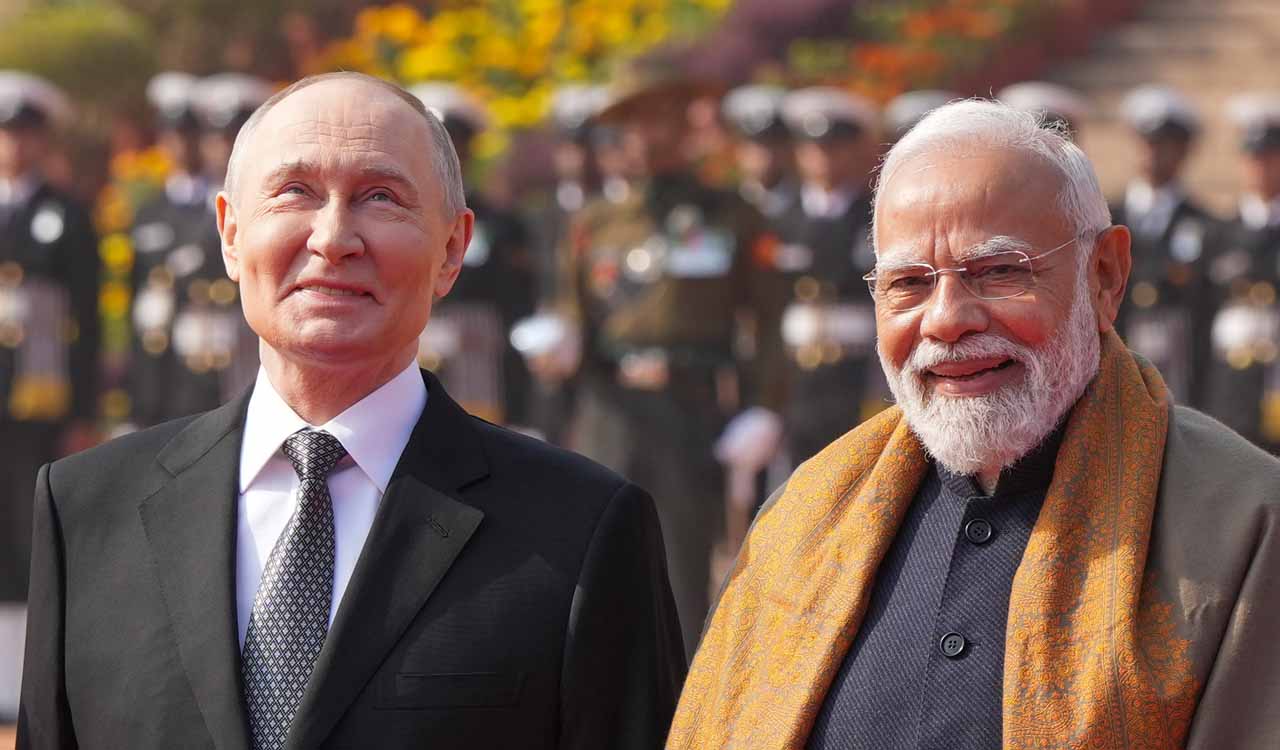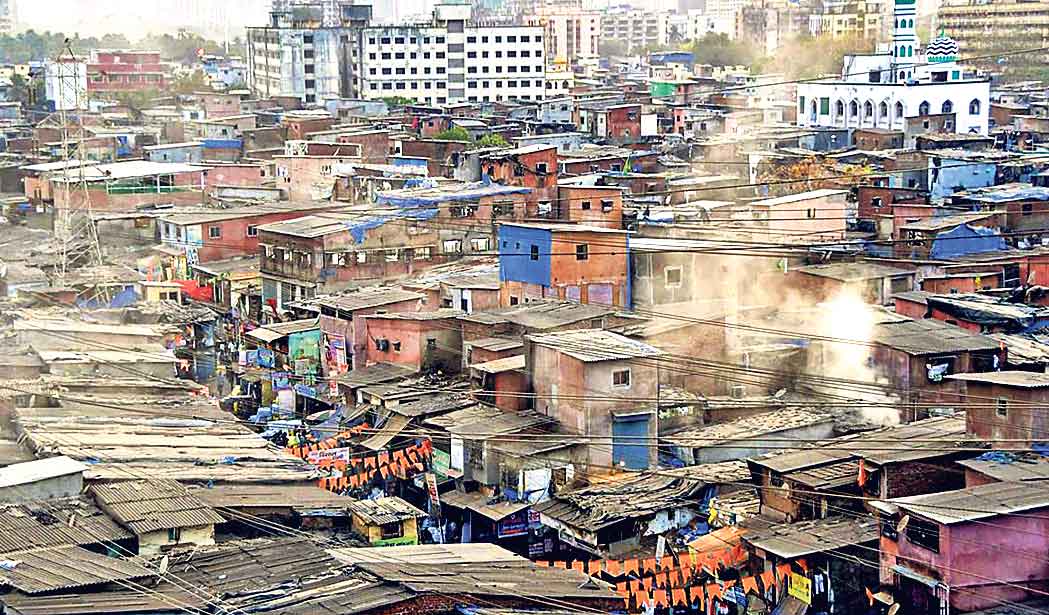Opinion: Why India needs its roadside heroes now more than ever
With every Raah Veer who steps forward, India moves closer to turning bystanders into lifesavers — and transforming its roads from sites of tragedy into spaces of hope

By Dr AV Gurava Reddy
The crash reality we live with: Every year, road crashes claim more than 1.5 lakh lives in India — one of the highest in the world. According to the Road Accidents in India 2023 report, the country witnessed 4,80,583 road accidents, leading to 1,72,890 deaths and 4,62,825 injuries. Globally, the WHO estimates 13 lakh deaths annually due to road traffic injuries, with low- and middle-income countries accounting for nearly 90 per cent of fatalities.
Also Read
At the state and city levels, the story is the same: Telangana reported 7,660 deaths in 2023, and Hyderabad alone recorded 2,943 accidents and 335 deaths.
Behind these grim numbers is a hard truth: most victims die not because of the crash itself, but because help didn’t reach in time. This is where the idea of the “Good Samaritan” comes in.
Origin of the Good Samaritan
The term Good Samaritan comes from a parable in the Bible (Gospel of Luke 10:25–37), where a traveller is beaten and left on the road. While others pass by, a Samaritan stops, tends to his wounds, and ensures he receives care. Over the centuries, this story has become a symbol of compassion towards strangers in distress.
In India, the spirit of this parable took shape in the Good Samaritan Law (2016, strengthened by 2020 rules), which legally protects bystanders who help road crash victims. They cannot be forced to reveal their identity, detained unnecessarily, or harassed in hospitals or police stations.
Shift to Raah Veer
Despite the law, awareness remained low, partly because the phrase “Good Samaritan” felt unfamiliar, rooted in a cultural context that many Indians couldn’t easily connect with. To bridge this gap, the government of India launched the Raah Veer scheme in April 2025, referring to rescuers as “Raah Veers”—literally “Heroes of the Road.” The term is simple, local, and instantly relatable. It conveys bravery, responsibility, and honour.
The Raah Veer scheme not only acknowledges life-saving acts but also motivates the public through cash awards and certificates of appreciation.
What does the Raah Veer Scheme offer?
- Earlier, under the Good Samaritan scheme, a rescuer was given only Rs 5,000 as a reward. With the launch of Raah Veer (April 2025), this has been enhanced fivefold to Rs 25,000 per incident, recognising the courage and importance of immediate lifesaving action through certification of appreciation, along with the cash award.
- An individual can be recognised up to 5 times a year.
- The award is processed through District Appraisal Committees (DACs) headed by the District Magistrate, with verification from police and hospitals.
- Each DAC includes the District Magistrate, SSP, CMOH, and RTO of the district.
- The DAC reviews and approves proposals monthly and forwards the list to the State/UT Transport Commissioner for further action.
- States and UTs are required to publicise the scheme widely, so more people come forward.
This makes Raah Veer not just a moral duty but also a nationally recognised act of courage and service.
Call for Decentralisation
Although the Good Samaritan Law was instituted in 2016, its implementation across India has been patchy. As per available information, of the 28 States, only a few — such as Karnataka, Jharkhand, Delhi, Bihar, and Rajasthan — have taken real steps to operationalise the law. In most States, awareness is low and guidelines are poorly followed.
India cannot reduce its staggering road deaths without building a culture where helping is the norm, not the exception
Another deterrent has been the tedious process: Currently, to recognise a Raah Veer, the process involves multiple steps: the police or hospital must issue an official acknowledgment on letterhead with full details of the incident; this is then forwarded to a District Appraisal Committee (chaired by the District Magistrate with senior officials as members). The committee reviews cases monthly, sends them to the State Transport Commissioner, and only then is payment made through the Public Financial Management System (PFMS). Further, State-level monitoring committees meet quarterly, and only three cases per State are nominated annually for national awards (Rs 1,00,000).
While the intent is good, such layers of verification and paperwork often discourage bystanders from stepping forward—highlighting the need to decentralise approvals to local-level committees like Tahsildars, SHOs, and trusted NGOs such as the Red Cross.
Limited Raah Veers
Even with supportive laws and rewards, the number of people who actually step forward is still limited. Studies and media reports show that fear of police harassment, lack of knowledge about rights, and hesitation to get involved still prevent many from helping. Surveys indicate that only 25–30 per cent of bystanders say they would intervene.
But every time a Raah Veer acts, lives are saved. From citizens in Hyderabad stopping traffic to rush a bleeding biker to college students in Bengaluru calling ambulances, these stories prove the power of ordinary people.
The way ahead
India cannot reduce its staggering road deaths without building a culture where helping is the norm, not the exception. This means:
- Spreading awareness about the Raah Veer scheme through schools, colleges, and workplaces.
- Celebrating Raah Veers through recognition programmes at the city, state, and national levels.
- Integrating 108 ambulance services with community training, so ordinary citizens know how to act in the golden hour.
- Shifting mindset from fear of involvement to pride in saving a life.
- Decentralising and simplifying the procedure for awarding Rs 25,000 under the Raah Veer scheme to ensure timely recognition and quick execution.
- Encouraging civil society organisations to act as platforms to identify and recognise Raah Veers.
- The scheme is part of the broader 4E approach (Education, Enforcement, Engineering, and Emergency Care), which India has been pursuing to improve road safety.
Final Word
The name may have changed from Good Samaritan to Raah Veer, but the essence remains the same: compassion, courage, and the belief that every life matters. With every Raah Veer who steps forward, India moves closer to turning bystanders into lifesavers — and transforming its roads from sites of tragedy into spaces of hope.

(The author is Chairman, Sarvejana Foundation)
Related News
-
Numaish 2026: Preparations in full swing at Nampally Exhibition Grounds
6 mins ago -
Indian Army signs MoU to fast‑track various drone capabilities
22 mins ago -
Hyderabad startup gets CDSCO nod for pain management wearable
27 mins ago -
Hyderabad: Unidentified youth dies in KPHB flyover bike crash
29 mins ago -
Second phase of local body polls: BRS makes comeback in Asifabad
33 mins ago -
Hyderabad: 21-year-old woman dies by suicide in Amberpet
35 mins ago -
AI trend pokes fun at Rs 10 lakh per selfie with Messi
41 mins ago -
KTR condemns Congress attack on BRS candidate in Kamareddy, warns of serious consequences
1 hour ago




